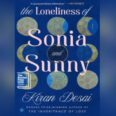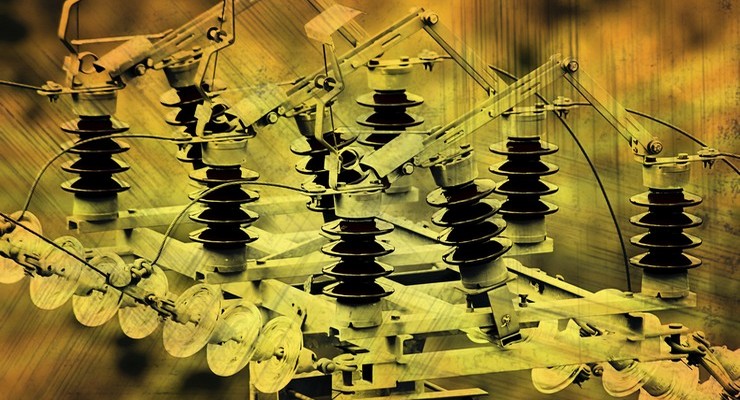USC Pacific Asia Museum, Southern California’s only museum devoted exclusively to the arts of Asia and the Pacific, held a press event today to announce new exhibitions and initiatives launching in early 2020. The event was hosted by cultural historian Dr. Bethany Montagano, who assumed her role as director of USC Pacific Asia Museum in May 2019.
Contemporary Art Exhibitions
The first exhibition of 2020, a solo show by New York-based artist Oscar Oiwa entitled Oscar Oiwa: Dreams of a Sleeping World, features an immersive mural installation and large-scale landscape paintings. On view from January 10 – April 26, 2020, the exhibition includes an expansive site-specific mural described by the artist as a 360° dreamscape drawn with approximately 120 Sharpie permanent markers on the interior of a white nylon dome spanning nearly 800 square feet. Just outside the installation in an adjacent gallery is a suite of colorful and surreal landscape paintings, cityscapes and forestscapes which defy the laws of physics. Oiwa is known for using fantasy to create allegories of existential threats to the environment. Oscar Oiwa is a Japanese artist born in 1965 in São Paulo, Brazil. Now an American citizen, Oiwa lives and works in New York City. He has exhibited internationally, and his work is included in many renowned private and public collections.
On view March 13 – June 7, 2020, We Are Here: Art and Asian Voices in LA will feature work by Reanne Estrada, Phung Huynh, Ahree Lee, Ann Le, Kaoru Mansour, Mei Xian Qiu, and Sichong Xie. The exhibition aims to ignite understanding across geography and generation, culture and difference. The seven Los Angeles-based female contemporary artists of diverse Asian Pacific heritages featured in the exhibition engage with and draw from their family experiences as refugees, immigrants and as foreign nationals to create compelling works of art that invite visitors to think about their own histories. Interwoven in their works are personal and universal narratives that give voice to the plural community we call home. A variety of media will be represented including painting, photography, and video.
Chinese Gallery Renovation
In addition to contemporary art exhibitions, the museum will debut renovated Chinese galleries for Chinese objects from the permanent collection. The renovated galleries’ design will reflect a return to the building’s history as a house museum, with architectural details that reflect the sensibility of the revered objects in the Chinese collection. The renovation is made possible through a significant and generous gift from longtime friends and supporters of USC PAM, Rhoda Man-Ying Lo and her family, who have gifted the museum with a generous donation to rename our Chinese gallery after their late husband and father. The redesigned gallery will open this year as the Dr. William W.M. Lo Chinese Art Gallery.
The museum’s extensive collection of objects from China includes ceramics, jade, textiles, and ritual objects. The renovation will allow the museum to display more examples of their over 600 Chinese ceramics from the Neolithic era through the Qing dynasty. The museum holds ceramics from The Han, Tang, Song and Ming dynasties and Imperial porcelains from the Qing dynasty. The museum’s jade collection includes 150 Chinese works from the Neolithic period through the Qing dynasty, including a pair of jade earrings of extraordinary quality, believed to have been owned by China’s last Dowager Empress, Ci Xi. The central holdings of the costumes and textiles collection are 2,000 Chinese textiles from the Ming (1368-1644) and Qing (1644-1911) dynasties and among the most prized holdings are 50 outstanding Imperial Chinese silk robes and an important Chinese embroidered hand scroll signed and dated 1627.
New Interactive Education Gallery
Always known as a wonderful place for families and children to visit, the museum is excited to announce a completely redesigned family and children’s gallery, the Silk Road Gallery. All elements of this interactive exhibit will be centered around the theme of cross-cultural exchange with the oasis city of Dunhuang as an anchor of the gallery. The gallery will feature an interactive map, historically accurate clothing for dress up, new touch objects, a photo-op mural, a new children’s and adult library, audio recordings of stories and music, new collection objects on display, and more.
Grace Nicholson Room
Also debuting in 2020 is the museum’s new Grace Nicholson room, a gallery and event space devoted to Grace Nicholson (1877-1948), the pioneering collector and entrepreneur behind the museum’s remarkable building. Nicholson’s business acumen and adventurous lifestyle challenged expectations of women in the early twentieth century. Her first business, a curio shop in Pasadena, thrived, as did her cultural studies and anthropological field work. Although Nicholson was best known for collecting Native American arts, her merchandise was diverse in origin, coming from North America, Europe, and Asia. Her interest in Asia eventually dominated her galleries, conveying the values of intercultural understanding, which continues to be the core of USC Pacific Asia Museum’s mission. By 1904 she became one of the first women admitted to the American Anthropological Association due in part to the connections she made with Native American basket makers. In 1924 Nicholson hired the leading Pasadena architectural firm Marston, Van Pelt, and Maybury to construct a building inspired by the Chinese palaces of the Forbidden City with an arched entrance based on the Buddhist library in Beijing. The historic building at 46 North Robles Avenue has served as a center for art, culture and learning in Pasadena since its construction. Nicholson gave the building to the City of Pasadena in 1943 and it has since been designated a Cultural Heritage Landmark by the cities of Pasadena and Los Angeles. In 1976 it was placed on the National Register of Historic Places and in 1989, it was declared a Historical Landmark by the State of California. The museum’s Grace Nicholson room will feature photographs and wall text celebrating the life and work of Nicholson.
USC Pacific Asia Museum
The USC Pacific Asia Museum is Southern California’s only museum exclusively devoted to the arts of Asia and the Pacific. Since 1971, the museum’s mission is to further intercultural understanding through the arts of Asia and the Pacific Islands. Its collection of more than 17,000 items from across Asia and the Pacific Islands spans more than 5,000 years.
Dr. Bethany Montagano, USC Pacific Asia Museum Director
Cultural historian Dr. Bethany Montagano assumed her role as director of USC Pacific Asia Museum in May of 2019. Montagano was most recently senior curator at Skirball Cultural Center in Los Angeles, where she originated major art, photography and fashion exhibitions that aimed to create a more just society. While there she curated “Pop for the People: Roy Lichtenstein in L.A.,” “Black is Beautiful: The Photography of Kwame Brathwaite” and “Fearless Fashion: Rudi Gernreich.” Montagano earned her Bachelor of Arts degree in Asian Studies and studied at Kansai Gaidai University in Osaka, Japan. She has a master’s degree in Museum Studies and earned her doctorate in American History with an emphasis on gender, race and cultural representation from the University of Notre Dame. Montagano played a role in the opening of the Smithsonian National Museum of African American History and Culture and on exhibitions and publications at the Smithsonian National Museum of the American Indian that illuminate issues of displacement, representation and stereotyping. Of her new position Montagano has said, “I hope to bring a strong sense of inclusivity and access to the USC Pacific Asia Museum and ensure that all feel honored and welcome at the museum.”
USC Pacific Asia Museum, 46 North Los Robles Avenue, Pasadena, (626) 449-2742 or visit pacificasiamuseum.usc.edu.



















